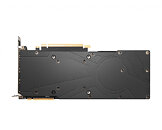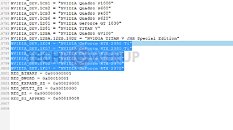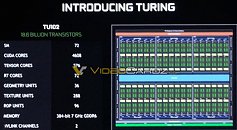
22 GB Modded GeForce RTX 2080 Ti Cards Listed on Ebay - $499 per unit
An Ebay Store—customgpu_official—is selling memory modified GeForce RTX 2080 Ti graphics cards. The outfit (located in Palo Alto, California) has a large inventory of MSI GeForce RTX 2080 Ti AERO cards—judging from their listing's photo gallery. Workers in China are reportedly upgrading these (possibly refurbished) units with extra lashings of GDDR6 VRAM—going from the original 11 GB specification up to 22 GB. We have observed smaller scale GeForce RTX 2080 Ti modification projects and a very ambitious user-modified example in the past, but customgpu's latest endeavor targets a growth industry—the item description states: "Why do you need a 22 GB 2080 Ti? Large VRAM is essential to cool AIGC apps such as stable diffusion fine tuning, LLAMA, LLM." At the time of writing three cards are available to purchase, and interested customers have already acquired four memory modded units.
They advertise their upgraded "Turbo Edition" card as a great "budget alternative" to more modern GeForce RTX 3090 and 4090 models—"more information and videos" can be accessed via 2080ti22g.com. The MSI GeForce RTX 2080 Ti AERO 11 GB model is not documented within TPU's GPU database, but its dual-slot custom cooling solution is also sported by the MSI RTX 2080 SUPER AERO 8 GB graphics card. The AERO's blower fan system creates a "mini-wind tunnel, pulling fresh air from inside the case and blowing it out the IO panel, and out of the system." The seller's asking price is $499 per unit—perhaps a little bit steep for used cards (potentially involved in mining activities), but customgpu_official seems to be well versed in repairs. Other Ebay listings show non-upgraded MSI GeForce RTX 2080 Ti AERO cards selling in the region of $300 to $400. Custom GPU Upgrade and Repair's hype video proposes that their modified card offers great value, given that it sells for a third of the cost of a GeForce RTX 3090—their Ebay item description contradicts this claim: "only half price compared with GeForce RTX 3090 with almost the same GPU memory."
They advertise their upgraded "Turbo Edition" card as a great "budget alternative" to more modern GeForce RTX 3090 and 4090 models—"more information and videos" can be accessed via 2080ti22g.com. The MSI GeForce RTX 2080 Ti AERO 11 GB model is not documented within TPU's GPU database, but its dual-slot custom cooling solution is also sported by the MSI RTX 2080 SUPER AERO 8 GB graphics card. The AERO's blower fan system creates a "mini-wind tunnel, pulling fresh air from inside the case and blowing it out the IO panel, and out of the system." The seller's asking price is $499 per unit—perhaps a little bit steep for used cards (potentially involved in mining activities), but customgpu_official seems to be well versed in repairs. Other Ebay listings show non-upgraded MSI GeForce RTX 2080 Ti AERO cards selling in the region of $300 to $400. Custom GPU Upgrade and Repair's hype video proposes that their modified card offers great value, given that it sells for a third of the cost of a GeForce RTX 3090—their Ebay item description contradicts this claim: "only half price compared with GeForce RTX 3090 with almost the same GPU memory."



















































